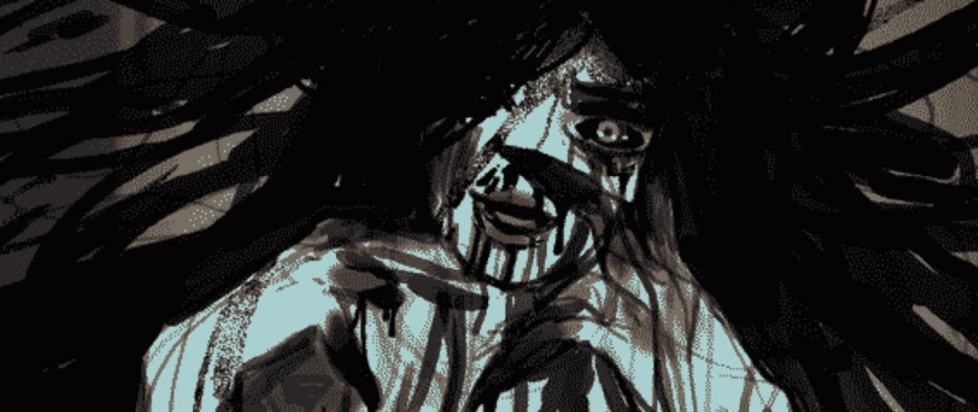
I Played Over 100 games this Year and This is What I Learned
At the start of 2020, when all of us were only suffering through heightened depression and hopelessness and not a full-blown extinction event, I gave myself the optimistic task of clearing out my Steam backlog. The rules were simple: I would start at the oldest unplayed entries in my library and work forward, playing a maximum of two hours on each title. If I liked the game after that time, I would mark it to revisit later, and move onto the next one.
In the end, despite this year’s best efforts, I managed to plow through 136 titles out of the 172 unplayed games in my Steam library. You can see them all here. It wasn’t even the pandemic that ultimately shut me down – that honor goes to a power surge that fried my computer. Still, from the 136 games I did get to, I learned a lot not just about my own play preferences (turns out, I like visual novels as a concept way more than actually playing them), but also what makes for a good first impression. Let’s slice some data, shall we?
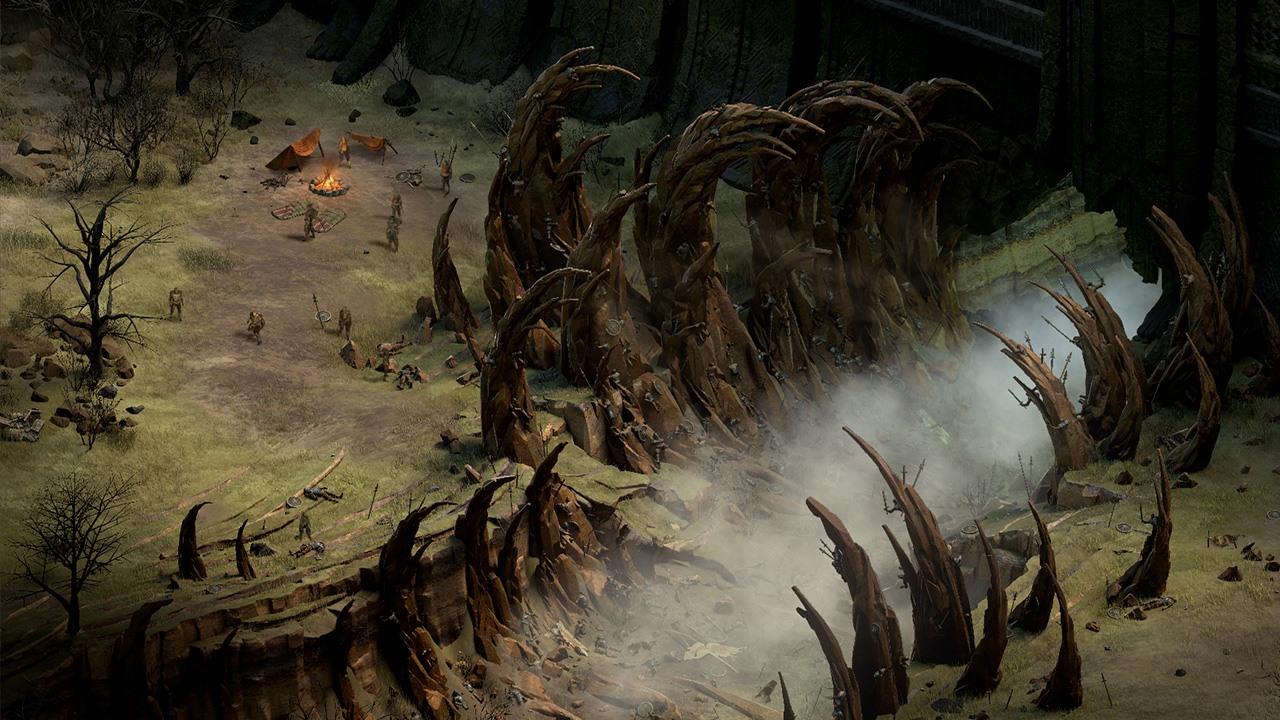
 By Genre
By Genre
Out of the 136 games I played, RPGs took up the biggest chunk with 36 titles, followed by adventure games (18), platformers (16) and shooters (14). The least-represented genres were stealth (2), horror (1), cultivation (1) and so-called “serious games” (also 1).
Excluding genres with only one to two entries, the best-performing game types were strategy (33% marked to revisit) and survival (25%). Friends often insisted that RPGs were ill-suited to a timed format, which may be true, but RPGs (17% revisit rate) nevertheless outperformed many other genres. Including shooters (14%), which don’t generally have the slow burn problem RPGs are known for. Four genres scored a whopping 0% revisit rate: puzzle games (god I hate them), sims, exploration games and visual novels (more on that later).
I’d like to drill further into RPGs, since they’re the biggest data set. Of the six RPGs marked to revisit, two of those six (33%) were Japanese RPGs (Recettear and Lightning Returns). Of the four Western RPGs, three were isometric games based on or inspired by the Infinity Engine: Baldur’s Gate 2, Pillars of Eternity and Tyranny.
You may look at this and conclude that JRPGs simply performed worse than their Western contemporaries. But of the 30 RPGs I decided not to revisit, only 3 were Japanese. In other words, JRPGs are batting .400, while western RPGs are swinging below .150.
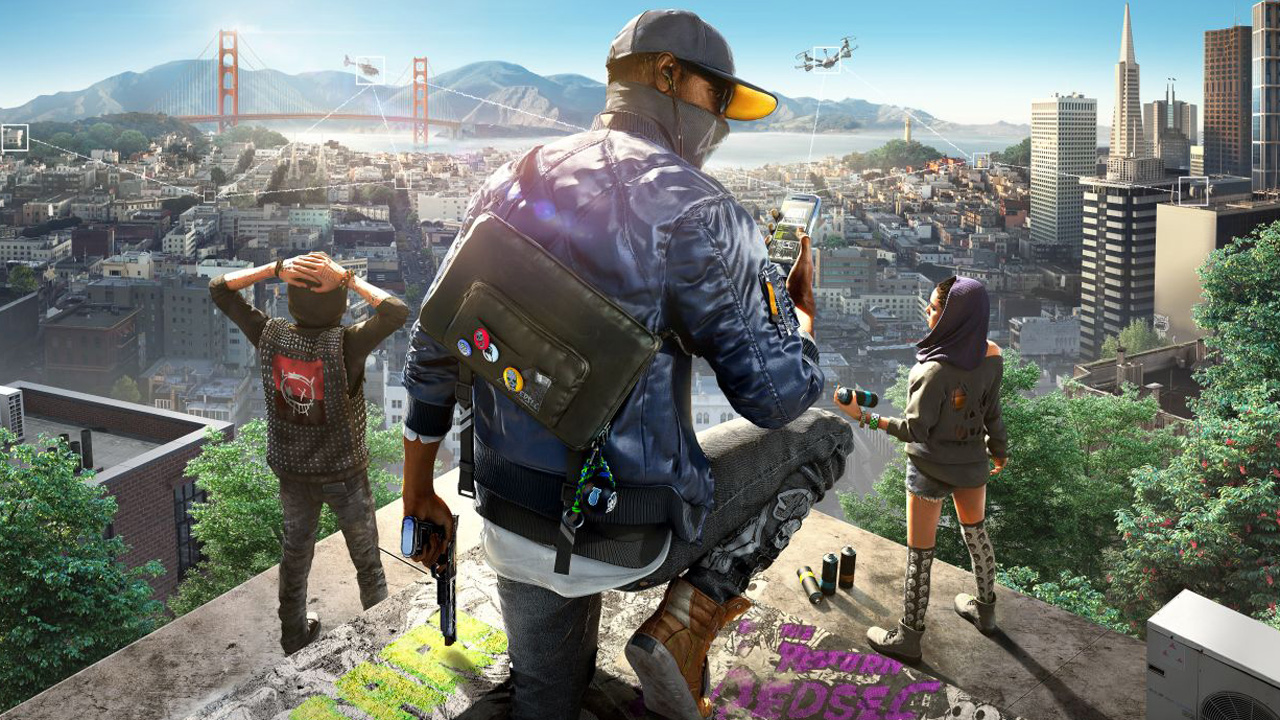
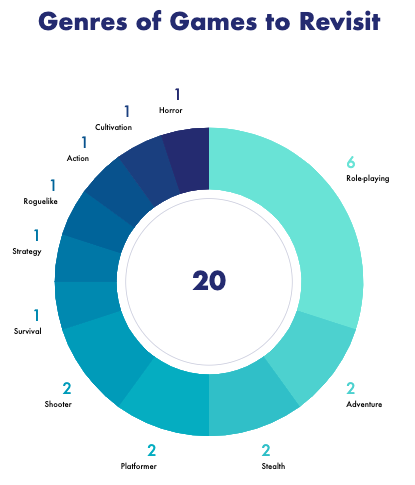 By Publisher
By Publisher
Ubisoft published ten out of 136 played titles (7%), the most prominent publisher by a good margin. LucasArts and Bethesda tied in second place with five titles each (3.6%), while Square Enix and 2K each had four (2.9%).
Bigger publishers almost always coincided with a worse play experience. Only two of Ubisoft’s ten games (20%) made it onto my revisit list, and of the remaining eight, exactly half (40%) had some kind of technical issue that either impeded or completely prevented play: convoluted DRM, game-killing bugs, etc. Watch Dogs 2 actually required me to install third-party anti-cheating software just to run the game, never mind play it.
Only one publisher had all of its games marked for revisit: Paradox, with 2 out of 2 titles.
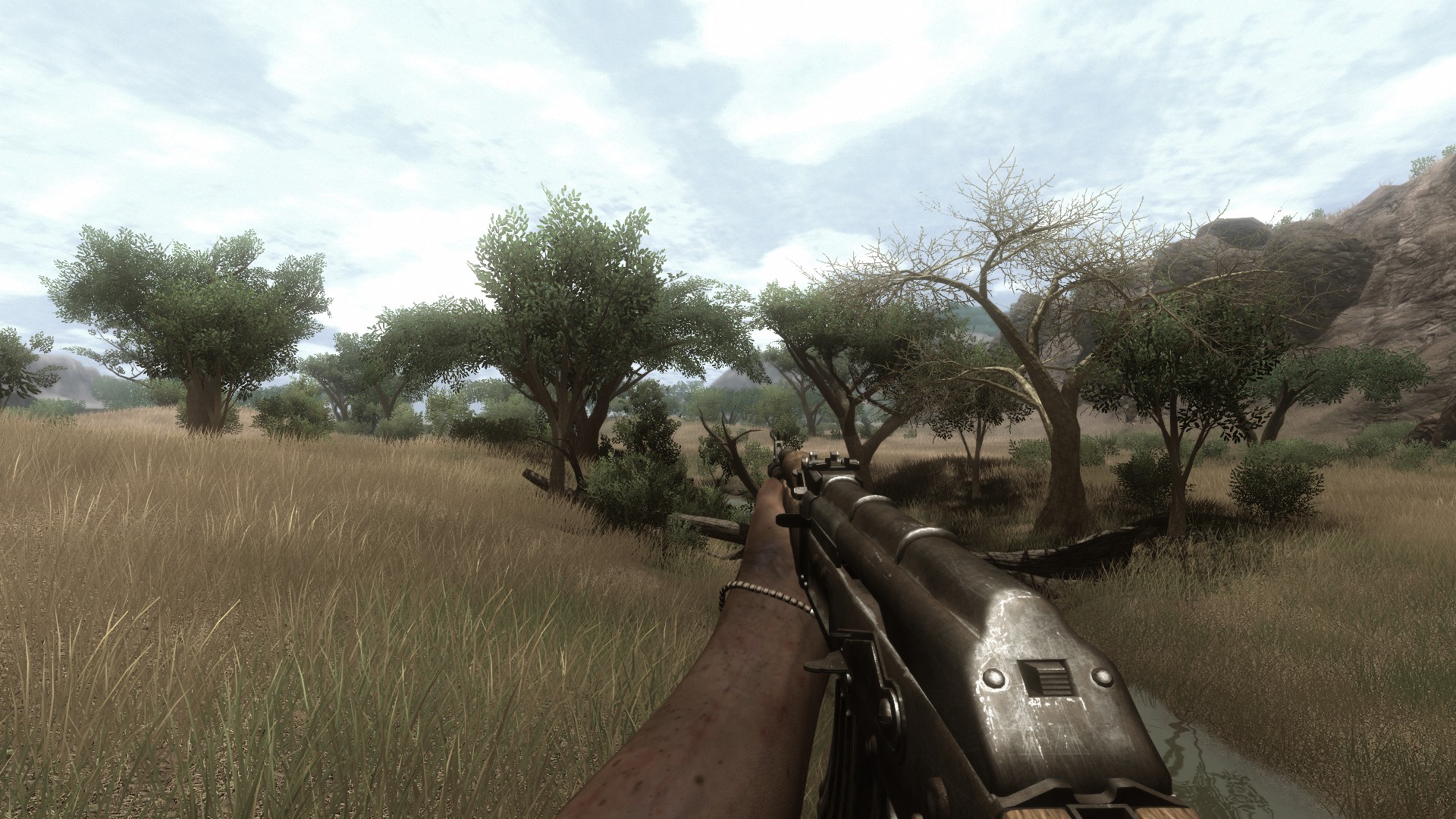
 By Studio
By Studio
To break down by development studio, I categorized games into three types, which I’m sure will be hotly contested on Twitter:
“Big” games are major studio games, tentpole releases, etc.
“Midsize” games largely consist of third-party development studios with outside funding, industry clout and/or major publisher support.
Lastly, for the purposes of data slicing I’m defining “indie” games as a wide umbrella encompassing self-financed games, crowdfunded games, self-published games and small publisher games.
Only 31 out of the 136 games I played could be considered “big” releases, of which only four made it onto my “to-revisit” list: Dishonored, Don’t Starve, Lightning Returns and Far Cry 2. Even FC2 is a little tentative, because it’s a Ubisoft game (see above).
The biggest winners were midsize games, with ten out of 33 titles marked to revisit, or 50% of my shortlist. Four of six selected RPGs belong to this category as well.
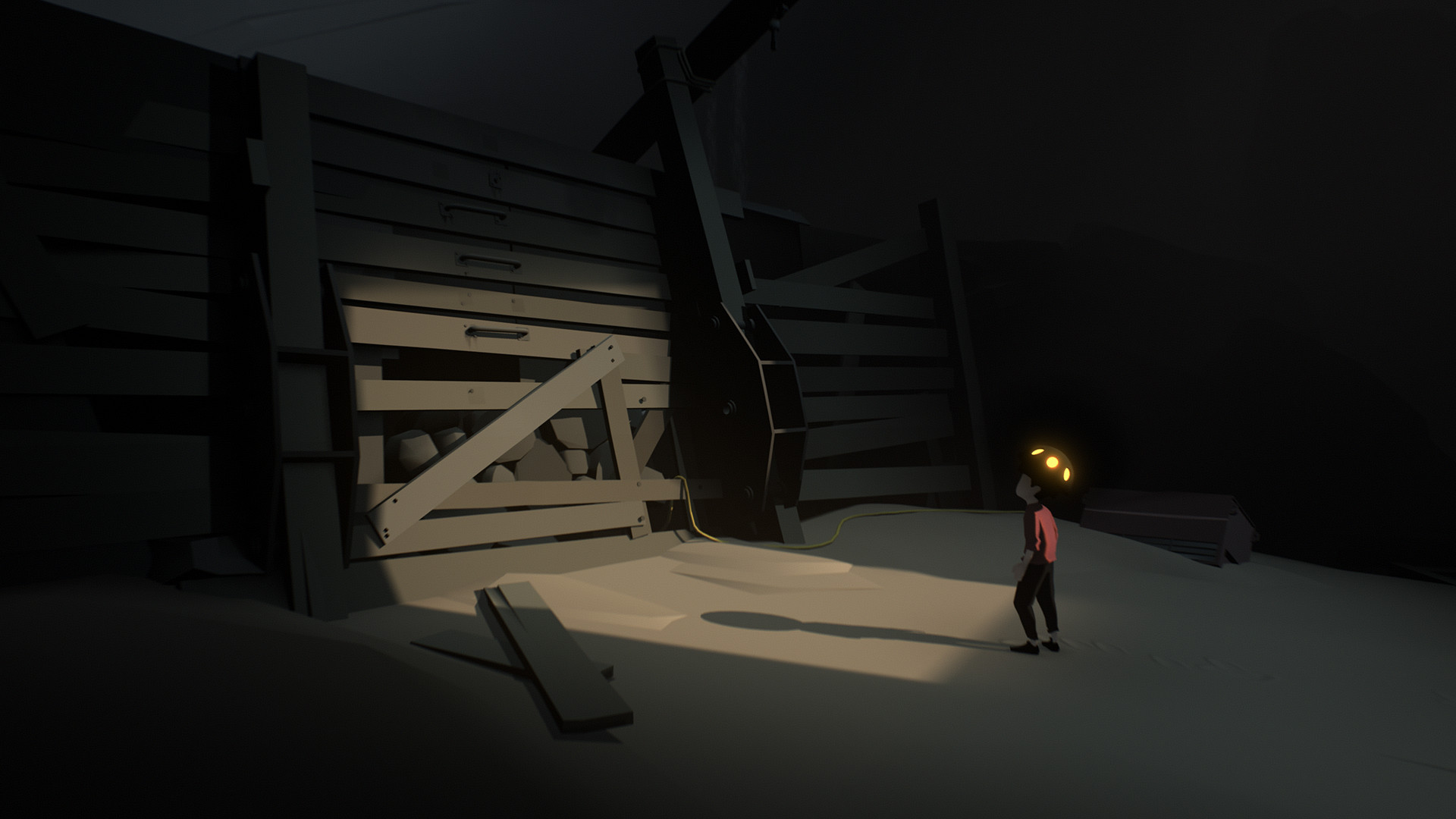
 By Interest-Killer
By Interest-Killer
54 out of 136 games were played up until the two-hour time limit. 14 ended early because of short runtime or because my brain felt like it had had a big meal and I needed to lie down. And 29 were cut short because I found them unbearably boring.
All of these are what I would consider personal reasons, not a reflection of a game’s quality. But a further nine games got the boot early because of content reasons:
- Contrast: POV character is a child, placed in a hypersexualized environment.
- Mars: War Logs: Edgelordy gratuitous prison rape scene with bonus fatphobia.
- Always Sometimes Monsters: How did anyone ever think this was well-written?
- Ozmafia: Fatphobia.
- Black the Fall: Neoliberalism.
- Exogenesis: Opens with a teen girl getting graphically mutilated, sexily.
- Inside: Constant child death.
- Final Fantasy Type-0: Press X to support the troops, kupo!
- The Witcher: YOU SAVE A LADY’S LIFE AND THEN SHE SLEEPS WITH YOU.
Everyone has their “nope” threshold and mine is apparently calibrated for child endangerment. Only Inside won a spot on the shortlist, despite its content. Great game, wrong year to play it.
And it shouldn’t need to be said, but the issues in these nine games were also present in many other titles, especially the casual sexism and fat-shaming. At least 27 games I played had some kind of overt bigotry on display within the first two hours of gameplay. So if anything, this speaks to just how inured I (and many others) have already become to hateful content in our games, that only this small handful were so extreme I couldn’t continue.

 Takeaways
Takeaways
Statistically, based on the above data, the ideal game is:
- An isometric RPG
- Made by a midsized studio
- Published by Paradox
Follow those rules and you can’t go wrong! At least if you’re marketing to me specifically.
Jokes aside, this is all clearly unscientific, insofar as it’s just one person’s play preferences. Most of my Steam purchases were made between 2014 and 2018, when I was a full-time game journalist, and broadly reflect the tastes of the games critic set: critical darlings, midsized independent studios and niche genres. That said, I do believe there are some trends here worth noting.
Slow burn games did suffer somewhat from the two-hour time limit, but not as much as you might think. Many of the games on my “to-revisit” list start out slow, including Stardew Valley, Deadly Premonition, Don’t Starve and Lightning Returns. All these titles have a powerful hook within the first few minutes of play, be it a compelling opening cutscene or a gratifying early gameplay loop.
On the flip side, visual novels are arguably the slowest burn games of all and most of the ones I played did not get what most fans would consider a fair shake. And yet, the problems I experienced with these games were pretty consistent: unrelatable characters, ridiculous amounts of extremely bad writing and a virulent strain of violent misogyny, especially out of the Japanese (and Japanese-inspired) VNs. Only We Know the Devil left me in any way satisfied: the writing is brisk, the characters are interesting and the choices are meaningful. Also, you can finish it in an hour.
Still, I can’t see myself rolling the dice on a VN in the future, unless it’s by an indie I happen to trust. This bums me out, because I spent years going to bat for this genre, defending them against gameplay purists. Visual novels are games, of course, and I’m happy to see how much more popular they’ve become in the past few years. But they’re a serious time investment, and Sturgeon’s Law still applies.
But the number one takeaway, for me, is Ubisoft. The publisher’s anti-piracy and anti-cheat measures are fucking grotesque on PC, sometimes to the extent of making a game impossible to run, especially if it’s more than a few years old. All the major publishers are DRM-happy, but Ubisoft is the one major pub that seems to start from the presumption that all its players are criminals. I think I must’ve spent more time jumping through DRM hoops than actually playing Ubisoft’s games.
If you want to try something similar with your own game library, I recommend it! At the very least, you’ll get a solid impression of a game you might not otherwise have gotten around to, and you’ll get to brag to your friends about only having 36 games left in your backlog. You may need to make exceptions for genres or themes that don’t fit well within the format, especially open world and text-heavy games. The most important thing is to not get stuck on one game, however much you want to.
Also, don’t try to tackle your backlog in a plague year.




